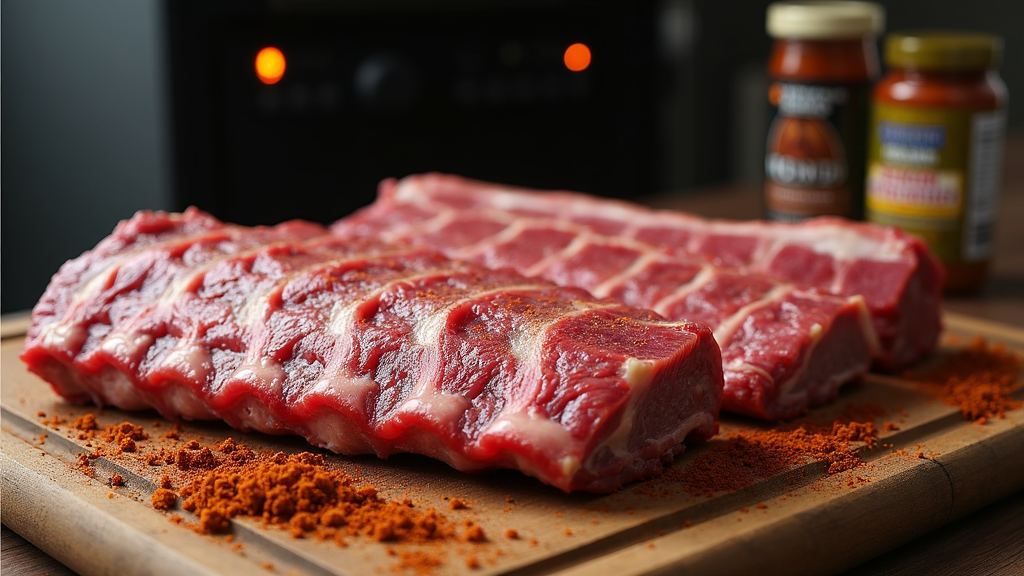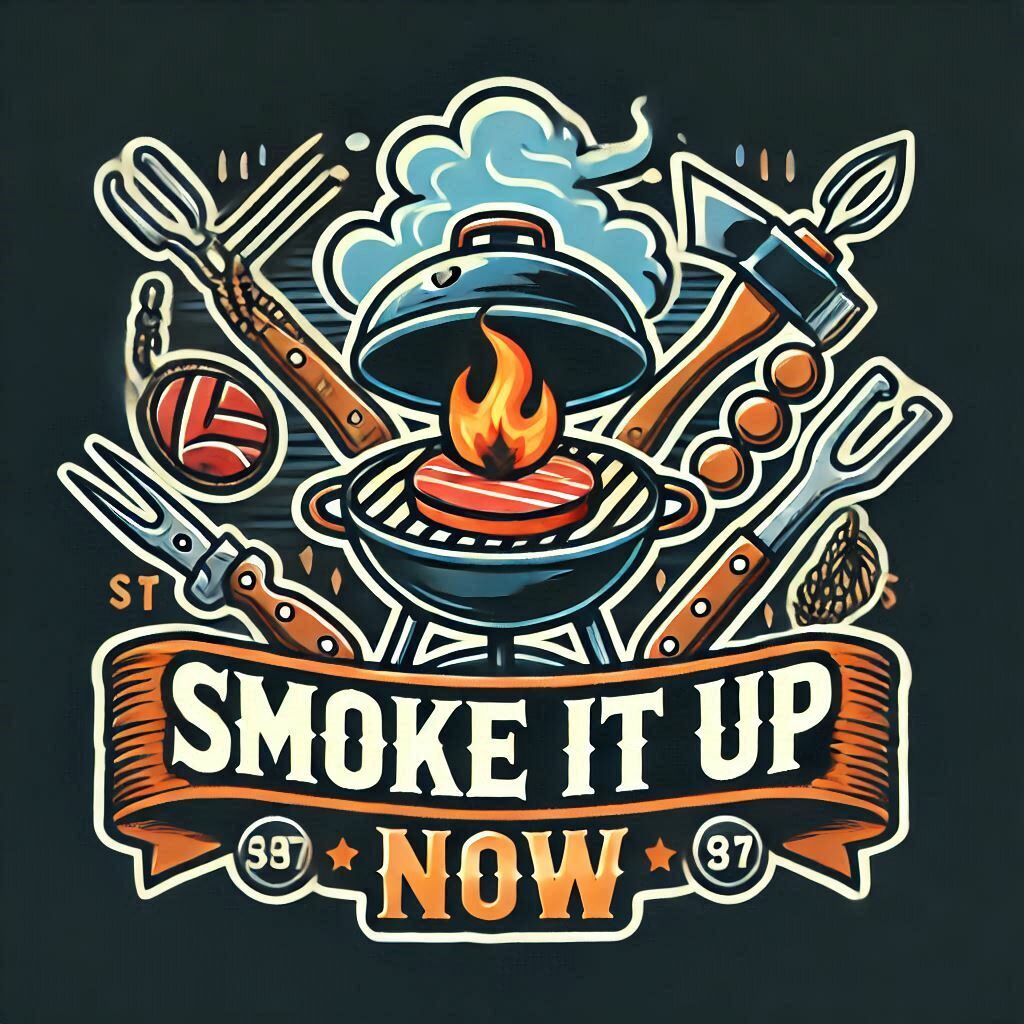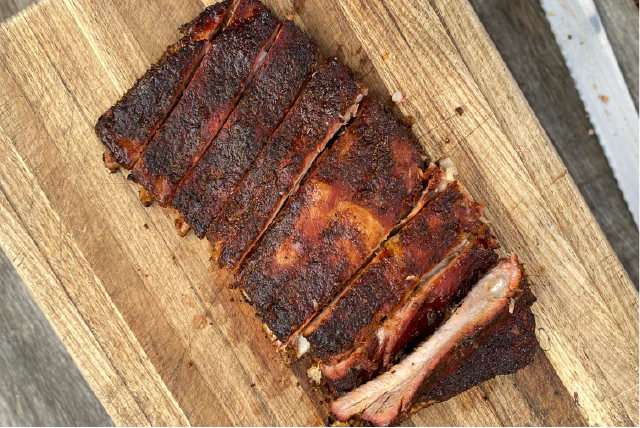Smoking ribs at home is one of my favorite ways to turn an ordinary day into something special. Even if you’re just starting out, choosing the right type of rib for your next barbecue can really set you up for a great result. With a few main options to choose from, it helps to know what each type brings to the table, what flavors or textures you can expect, and which rib might fit your taste or meal plan best. Here’s an all-in-one guide based on what I’ve learned from years of backyard smoking (and eating my share of ribs). If you’re standing at the butcher counter and trying to decide, I’ve got you covered.

Understanding Rib Basics: The Big Three
When you hear folks talk about “ribs,” they usually mean pork ribs, but beef ribs have really grown in popularity. The three types you see most often are baby back ribs, spare ribs (including St. Louis style), and beef short ribs. While there are other cuts, these three give you a solid starting point for nearly any smoking project.
- Baby Back Ribs: Cut from the top of the rib cage between the spine and the spare ribs. They’re curved, tender, and lean, and they cook a little faster than the others.
- Spare Ribs: Cut from lower down the rib cage, closer to the belly. They’re flatter, a bit fattier, and packed with flavor. When trimmed, you get St. Louis style ribs—a rectangular, even cut that’s easier to serve and cook.
- Beef Short Ribs: Thick, meaty ribs taken from the lower portion of a steer. They can be super juicy if smoked right and have a richness that stands up to bold seasonings or sauces.
Learning about where the rib comes from on the animal tells you a lot about texture, flavor, and how it handles the smoker. That’s a big part of setting yourself up for success before you even fire up the coals.
Choosing the Right Rib: Personal Taste Meets Smoking Results
Your choice depends on more than just what looks good at the store. Different ribs cook in different ways, and each one has a flavor profile and texture that pairs best with certain eating styles or gatherings. Here’s what I consider when picking my ribs for the smoker, and some tips to help you lock in a great result:
Flavor and Texture Preferences
- Baby Back Ribs: These are lighter, with a bit less fat, which means a delicate pork flavor and a smooth, almost buttery texture when done right. They’re a go-to if you like your ribs tender but not greasy. Because they’re a bit smaller, you get more bone than meat compared to spare ribs, but that’s not a bad thing if you like to snack and nibble.
- Spare Ribs/St. Louis Style: You’ll notice richer pork flavor from the higher fat content. The meat is a little chewier in a good way, and the bones are bigger and flatter, making them super satisfying to eat. If you like bold barbecue sauces or dry rubs, spare ribs really soak in and showcase those flavors.
- Beef Short Ribs: These have a deep, beefy flavor that stands up to strong smoke and even heavy-handed seasoning. Think of them as the brisket of the rib world; tender, unctuous, and just right for folks who want something hearty. Beef ribs are also larger by weight, so you get some really eye-catching results.
Smoking Time and Effort
- Baby Back Ribs: They’re ready faster, about 4 to 5 hours at 225-250°F on most smokers. This makes them a good pick if you want a barbecue without the all-day commitment.
- Spare Ribs: A little thicker, so plan for 5 to 6 hours. They need extra time for the fat and collagen to break down, but the payoff is worth it.
- Beef Short Ribs: These can stretch to 7 hours (sometimes more), but a low-and-slow approach creates ribs so tender you barely need a knife. The flavor gets deeper the longer you let them smoke and rest.
Group Size and Serving Style
- Baby Back Ribs: They’re nice for date nights, family dinners, or smaller get-togethers. Since they’re petite, plan on a half to a full rack (about 6-12 ribs) per person, especially for big eaters.
- Spare Ribs: A single rack can feed two or three people easily. Their shape works well for big platters and sharing, so they’ve become a popular choice for cookouts with a crowd.
- Beef Short Ribs: These come as singles or in plates (three to four bones per plate), and one is usually plenty per person. They’re show-stoppers for fancy meals or when you want to really impress.
Comparing the Types: Which Rib Is Best for Smoking?
Each rib has its own personality, and how they turn out depends on many factors: the cut you pick, your smoker, wood choice, and your technique. Here’s a heads-up on what each delivers for the backyard pitmaster:
Baby Back Ribs: Lean, Sweet, and Crowd-Pleasing
Baby backs give you a leaner mouthful, a quick cook time, and plenty of tenderness if you don’t dry them out. Beginners often like them for their mild flavor and more forgiving size. They take rub and smoke well, but lighter woods like apple or cherry really help bring out the best flavor without overpowering the pork.
Spare Ribs: Hearty, Flavorful, and Classic
Spare ribs deliver a juicy, rich eating experience. That extra fat helps keep things from drying out on the smoker, and you can hit them hard with bold rubs and a heavier smoke like hickory or oak. St. Louis style ribs are just trimmed spare ribs, and the rectangular shape helps them cook evenly. If you’re a fan of competition-style barbecue, these ribs are what the pros usually reach for.
Beef Short Ribs: Meaty, Robust, and Unforgettable
When you want beef (and a lot of it), short ribs make a statement. They need more time and patience, but the reward is a juicy, intensely flavored rib. Mesquite, oak, or even pecan work great here, and you can crank up the seasonings—beef can handle strong flavors. For extra showmanship, smoke whole short rib plates for big, restaurant-style results.
What to Consider Before You Pick
Standing at the butcher counter, it’s easy to get pulled in by how something looks, but I always think through a few details before I load up my cart:
- Budget: Baby backs tend to be a little pricier than spare ribs, pound for pound, because they’re more sought after. Beef short ribs are often the most expensive, but you do get a lot of meat per bone. Watch for sales or ask the butcher for value packs if you’re thinking of a big cookout.
- Availability: Not every store carries all the rib types year round. Baby backs and spare ribs are pretty easy to find at most supermarkets; beef short ribs show up more often at dedicated butcher shops or pricier grocery stores.
- Cooking Experience: Baby back ribs are a little more forgiving, so if you’re new to smoking, they’re not a bad first step. Beef ribs can take a bit of skill to get right, but they’re not out of reach with the right recipe and some patience.
- Presentation: If you want that dramatic look—think giant cuts and a hearty plate—beef short ribs deliver a visual impact no pork rib can match.
Prepping Ribs for the Smoker: Secrets for All Three Types
Good results aren’t just about picking the right cut. Taking care with your prep work pays off. Here’s how I get the most from each rib type and a couple key steps that make things easier:
- Membrane Removal: All ribs (especially pork) come with a thin, silvery membrane on the bone side. I always slide a butter knife under it, grip with a paper towel, and peel it off. This helps the smoke and rub get into the meat, and gives better bite-through texture.
- Trimming: St. Louis style ribs need a little extra trimming to get that perfect rectangle; beef short ribs sometimes have excess fat or silverskin you’ll want to remove so everything cooks evenly.
- Rub and Marinate: For pork ribs, I like to use a dry rub with brown sugar, paprika, salt, and a touch of cayenne. Beef ribs take salt, black pepper, and a bit of garlic powder really well—sometimes I’ll use just salt and pepper to let the beefiness pop.
Letting ribs sit in the rub overnight in the fridge draws out moisture and infuses the flavor deep into the meat. For more tips on prepping, check out guides like this one by Serious Eats; they break down trimming and seasoning step by step so you can follow along.
Smoking Tips I’ve Learned That Work for Any Rib
- Keep Temps Steady: Aim for 225-250°F for consistent, gentle smoking. Steady temperatures make it easy to get even results and avoid drying the meat out.
- Use a Water Pan: Placing a water pan in your smoker helps with moisture and temperature stability.
- Try the 3-2-1 Method (for pork ribs): That’s 3 hours of smoke, 2 hours wrapped in foil with a splash of apple juice or beer, then a final hour unwrapped to firm up the bark. This is incredibly helpful for beginners or anyone who wants a simple game plan that works.
- Rest Before Slicing: Give your ribs at least 10-15 minutes after smoking (even more for big beef ribs) so the juices settle for melt-in-your-mouth results.
Other small tricks I’ve picked up: always check your wood chips or chunks for size and soak if needed, and keep an instant-read thermometer handy to make sure your smoker is holding temperature. If you’re new to the world of backyard barbecue, these things make a noticeable difference.
Common Issues New Smokers Run Into, and How to Fix Them
Nobody gets perfect ribs right out of the gate, but a few simple checks can help you avoid the biggest mistakes and get better results each time you fire up your smoker.
- Dry Ribs: Happened to me plenty of times, usually from too high a temp or skipping the foil wrapping. Keep the smoker steady and follow a proven schedule. Don’t open the lid too often—keep the heat locked in.
- Chewy Texture: A sign you didn’t give enough time for collagen to break down. More time, lower heat, and a little patience is usually the cure. Make sure you start early and don’t rush things.
- Over-saucing: Try not to add barbecue sauce until the last 30 minutes; sugar burns easily, giving you a bitter taste and black crusts. Balance is better—brush on a thin layer just before finishing for a glossy, tasty finish.
Real-World Rib Pairings and Meal Ideas
- Baby Back Ribs: Pair them with cornbread, crunchy slaw, and a light beer or dry cider for a classic summer meal.
- Spare Ribs: Go for smoky baked beans, roasted potatoes, and a bold craft ale; they handle saucy sides or spice-forward pickles really well.
- Beef Short Ribs: Serve with rich mashed potatoes, garlicky green beans, and a big red wine (like cabernet or zinfandel). For leftovers, beef rib meat makes perfect barbecue sandwiches or can even be chopped up for tacos.
Frequently Asked Questions
Q: Are baby back ribs always pork?
A: Yes, “baby back” refers to a pork rib. The “baby” part is just because they’re smaller than spare ribs, not from baby pigs. Beef ribs are called “back ribs” or “short ribs” but not “baby backs.”
Q: What’s better for a smoky flavor: pork or beef ribs?
A: Both take on smoke really well. Pork ribs show off sweet, subtle flavors from lighter woods. Beef ribs can handle stronger woods and a more pronounced smoke flavor, great with mesquite or oak for that hearty vibe.
Q: Is it okay to prep ribs a day before I smoke them?
A: Absolutely. A night in the fridge with a good rub helps develop deeper flavor and dries out the surface for better bark (the crispy crust you get on the outside).
Q: Can I smoke ribs on a grill if I don’t have a dedicated smoker?
A: For sure! Set your grill up for indirect heat, add a drip pan, and toss in some soaked wood chips. Keep the lid closed and watch the temperature, and you can still get mouthwatering smoked ribs.
Bottom Line: Picking the Right Rib for Your Next Barbecue
There’s really no wrong choice, only what works best for your tastes, your group, and how much time you want to spend by the smoker. Baby back ribs are easygoing and dependable, spare ribs give you a meaty, classic barbecue bite, and beef short ribs bring that deep, satisfying flavor when you want to go all out. Once you get the hang of it, you’ll probably want to try all three and see which one fits your style best. Happy smoking, and enjoy every bite!

